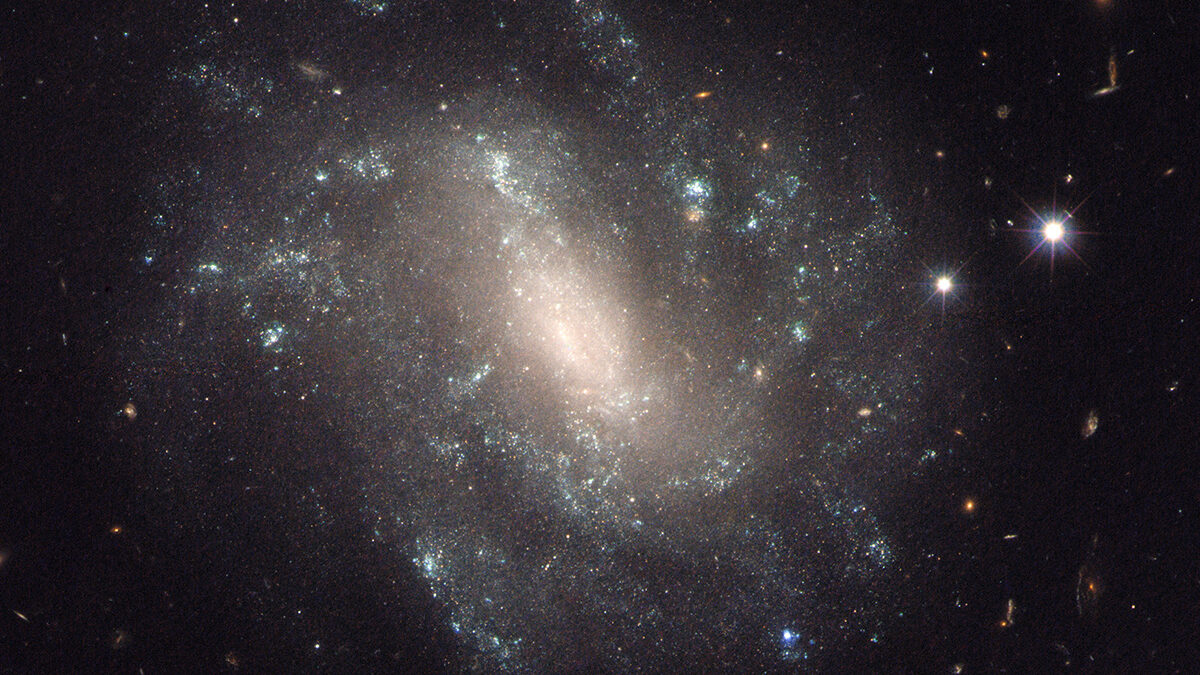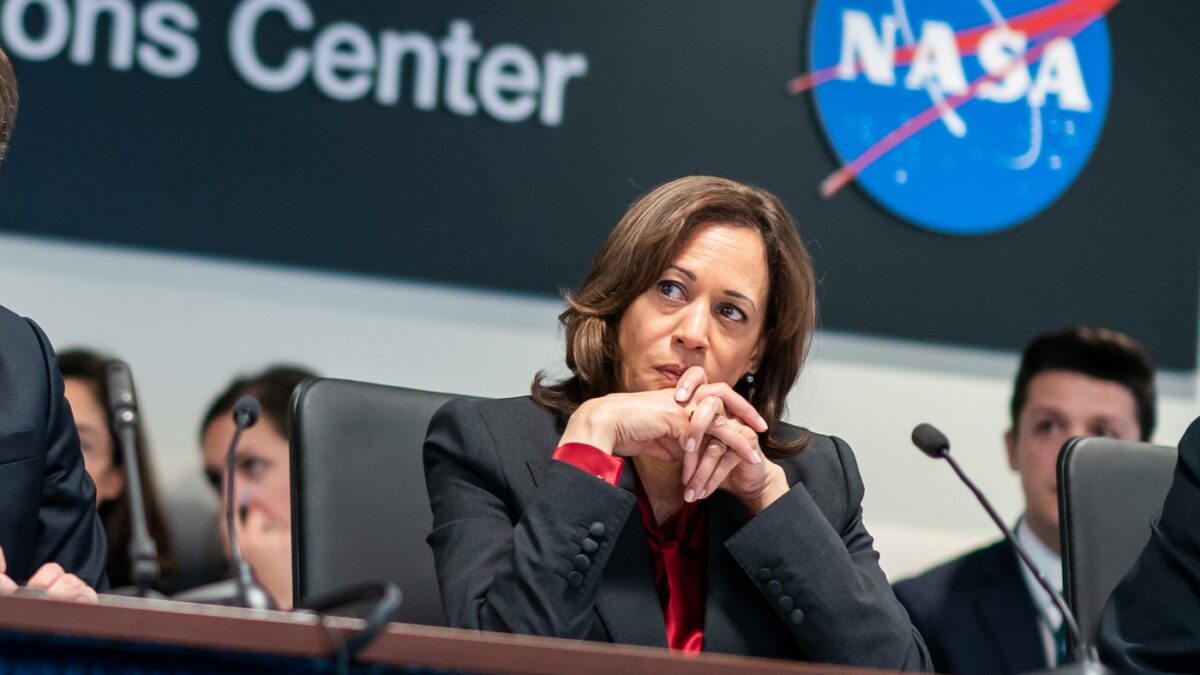Charles Thaxton earned a “D” in high school biology and was about to fail chemistry. After a semester of staring at a chalkboard full of gibberish, he still couldn’t balance an equation. And then, the night before the final exam, it all became clear to him in a dream. Literally. He slept, his mother prayed, and he woke up able to balance equations. That dream catalyzed a reaction, as it were, that ultimately altered the course of origin-of-life science.
Thaxton became a first-class scientist and a bit of a troublemaker for the establishment. He asked questions few others dared — like whether the scientific evidence we’ve gained about the origin of life supports popular theories, and where the boundaries of science really lie. While tearing down the sacred assumptions of the scientific establishment, Thaxton laid the foundation for a new community of open-minded scientists who were ready for a change. Decades later, Thaxton and those he has mentored and inspired continue to challenge “the science” with the evidence.
In his recent memoir “A Leg to Stand On,” Thaxton recounts his inauspicious youth and the unexpected adventure of his life with forthrightness, gratitude, and a touch of self-deprecating humor. He tells us that his earliest motivation for academic success was to avoid a life of picking cotton in Texas. Happily, he discovered a love for teaching, and the desire to seek and then share knowledge and understanding has led him to nearly every other adventure in his life.
The no-cotton-picking plan began amorphously. If not cotton, then what? Until his senior year in high school, he had never even considered attending college. No one, least of all his teachers, expected him to. But he knew he’d wasted time and that he wanted to get serious about learning. Fortunately, the local junior college required only that he be breathing, so that’s where he went. It was his only option, and he made the most of it. Not too many years later, he earned a Ph.D. in chemistry from Iowa State University and followed that with post-doctoral work in the history of science — at Harvard, no less.
Thaxton’s interest turned specifically toward chemical evolution and the origin of life after he read Michael Polanyi’s 1967 article “Life Transcending Physics and Chemistry” in Chemical and Engineering News. Polanyi, a physical chemist, argued that life is not reducible to mere chemistry and physics. Thaxton may have forgotten the paper had he not, soon after reading it, happened to hear an analysis of it by Francis Schaeffer, who called Polanyi’s assertion “one of the most outstanding propositions of the twentieth century.” Thaxton was intrigued. He began to examine the state of the origin-of-life field, and found it… well, let’s say unproductive.
Rejecting Darwin
Throughout the late 1970s, Thaxton gave guest lectures at universities around the country in which he questioned the productivity of the current origin-of-life research program, including its variations on the theme of Darwin’s “warm little pond.” For example, he pointed out that only with significant intervention by the investigator could any of the experimentally replicated, hypothetical early-Earth environments actually yield biologically relevant molecules. Without intervention, interfering cross-reactions would prevent the desired molecules from forming. The prebiotic soup simply would not have been friendly to the evolution of life through abiogenesis.
Talk like this drew some strong reactions from fellow scientists, many of whom knew that the critique was legitimate and didn’t like the implications. Thaxton was known to be a Christian, and his work was certainly motivated by his faith. But for listeners who assumed that Thaxton’s critique of origin-of-life research would be based on religion and emotion, his solidly science-based approach came as something of a shock and a wake-up call.
Thaxton recounts a session with about 25 professors and graduate students during which scientists in different disciplines objected to his critique, each by calling upon another scientist in another field. As each man in turn unexpectedly affirmed the correctness of Thaxton’s points, it became clear that the scientists had relied on what they believed to be true outside of their own areas of expertise to shore up their own theories, where they recognized weaknesses. These scientists needed an interdisciplinary view of evolutionary theory to see its true state.
An Interdisciplinary View
Thaxton was the man for that job. In 1976 he was asked to review a manuscript about the origin of life by Walter Bradley, an engineer, and Roger Olsen, a geologist. Thaxton saw the value in what he read, and he knew what was missing: more chemistry! “You’re the chemist,” said the others.
So after years of research and collaboration, in 1984, Bradley, Olsen, and Thaxton published a rigorous interdisciplinary critique of origin-of-life research: “The Mystery of Life’s Origin: Reassessing Current Theories.” (The book was republished in 2020 with several new chapters by leading experts.) In it they delved deeply into, among other things, the geochemistry of the early Earth, the role of thermodynamics in ordered systems, and the need for information, not just energy, to accomplish the order that we see in life.
Their work was persuasive. The book garnered unexpectedly positive responses from fellow scientists, many of whom accepted their critique on its merits, and even welcomed it as an accurate and much-needed evaluation of the state of the field. Thaxton, et al. had withheld their alternative hypothesis — that an intelligent cause was behind the origin of life — until the end of the book, allowing materialist readers to consider the evidence against chemical evolution on their own terms before being invited to make the paradigm-shifting concession that the evidence warrants a nonmaterial conclusion.
Leading a Movement
As “Mystery” gained readership, Thaxton found himself at the forefront of a new movement. The book changed minds and served as a rallying cry for those already like-minded: It ultimately brought together scientists and thinkers such as Dean Kenyon, Phillip Johnson, William Dembski, and Stephen C. Meyer, and the list goes on. These names are now almost synonymous with “Intelligent Design.” And there are many names we don’t know. In the beginning, scientists often whispered to Thaxton their agreement with his critique — and perhaps his conclusions. Many more are whispering today, and their voices are growing louder.
Back in the 1970s, a student once asked, “What does Carl Sagan say” about Thaxton’s critique of materialist theories of abiogenesis? For many, Sagan was the ultimate scientific authority. He was what we now call “the science.” Thaxton’s answer was to ask not what Carl Sagan says, but what the evidence says. Today, with much credit due to Thaxton, many brilliant minds are asking the latter question.









